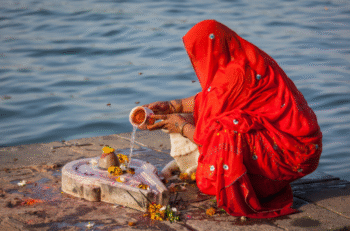Table of Contents
- Introduction
- 1. The Call of the River
- 2. Hardships on the Path
- 3. Moments of Grace and Miracles
- 4. Transformation Through the Journey
- 5. Voices from the Path (Sample Anecdotes)
- 6. The Living Tradition
- Conclusion
Introduction
The Narmada Parikrama is not just a physical journey; it is a spiritual pilgrimage that tests devotion, endurance, and faith. Pilgrims walk nearly 2,600 kilometers along the sacred river’s banks without crossing her waters. Along the way, they encounter hardships, moments of grace, and life-changing experiences. These stories of Parikrama pilgrims reveal how the journey transforms ordinary lives into extraordinary tales of faith.
1. The Call of the River
- Many pilgrims describe an inner calling—an irresistible pull to walk the Parikrama.
- Some take up the journey after personal loss, seeking peace and healing.
- Others are inspired by stories of saints and elders who completed the Parikrama before them.
2. Hardships on the Path
- Pilgrims walk through forests, villages, and cities, often barefoot.
- Harsh weather—scorching summers, heavy rains, or cold nights—tests their resilience.
- Limited food and shelter require reliance on local generosity and ashrams.
- Yet, most say these struggles only strengthen their devotion.
3. Moments of Grace and Miracles
- Many recount miraculous protection from wild animals or accidents.
- Stories of sudden help from strangers—food, shelter, or guidance—are seen as blessings of the Narmada Mata.
- Some speak of visions, dreams, or divine experiences that deepened their faith.
4. Transformation Through the Journey
- Pilgrims often begin with personal wishes or burdens but end with a sense of surrender and inner peace.
- The simplicity of walking day after day brings clarity, humility, and gratitude.
- Many say the Parikrama changes their outlook on life—teaching patience, compassion, and detachment.
5. Voices from the Path (Sample Anecdotes)
- “We had nothing to eat one evening, and just as we prayed, a villager appeared with food. For me, it was Narmada Mata herself feeding us.”
- “The blisters on my feet were painful, but with every step, I felt as if the river was carrying me forward.”
- “I began this journey to seek blessings for my family, but I returned with the blessing of peace within myself.”
6. The Living Tradition
- Even today, thousands undertake the Parikrama each year.
- Ashrams, dharmshalas, and villagers along the way support pilgrims, making the journey possible.
- These stories continue to inspire new seekers to walk in the footsteps of faith.
Conclusion
The Narmada Parikrama is more than a pilgrimage—it is a dialogue between the pilgrim and the river. Each step carries both hardship and grace, testing the body but awakening the soul. The stories of those who walked before remind us that the true destination is not the end of the path, but the transformation within.
